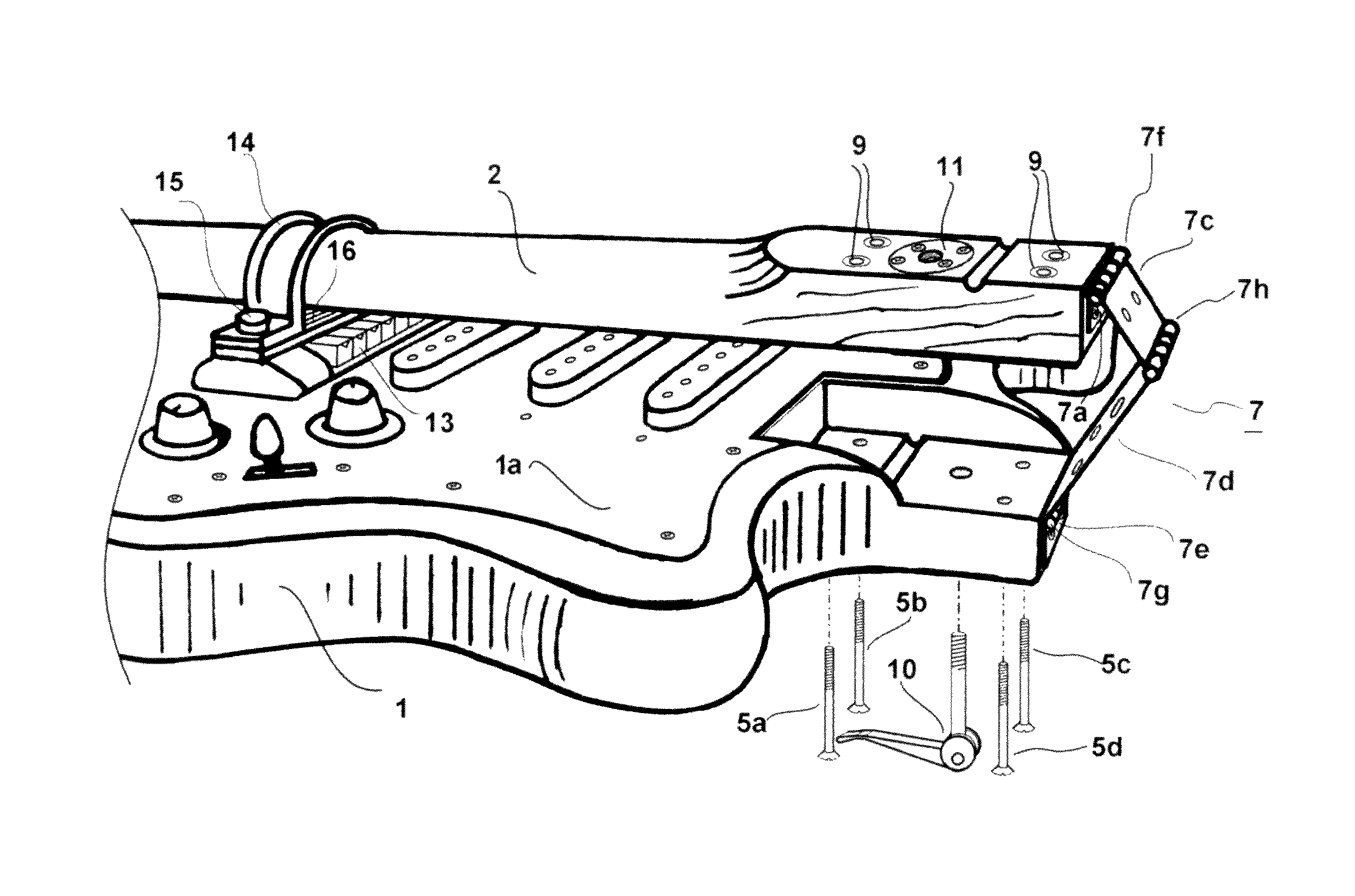Folding mechanism for bolt-on neck stringed instruments
a bolt-on neck and stringed instrument technology, which is applied in stringed instruments, musical instruments, guitars, etc., can solve the problems of the inconvenient transportation of the guitar, and the inability to remove the neck screw, so as to save the integrity of the instrument, improve the tonal quality, and simple and economical neck folding
- Summary
- Abstract
- Description
- Claims
- Application Information
AI Technical Summary
Benefits of technology
Problems solved by technology
Method used
Image
Examples
second embodiment
DESCRIPTION OF THE SECOND EMBODIMENT
[0070]FIG. 2A and FIG. 2B illustrate the second embodiment. The second embodiment differs from the first one in that the four machine screws 5a to 5d are replaced with a single, larger quick release handle screw 10 which threads into a plate 11 affixed to the bottom of the neck with screws 12, and in that the central flap 7b of the hinge is replaced by two flaps 7c and 7d.
[0071]Plate 6a plays a similar role as plate 6, distributing the pressure of the screw 10 over a larger area of the body.
[0072]Screws 12 affix plate 11 to the neck 2 and when the guitar is in use and transmit the tension on screw 10 from plate 11 to the neck 2, which converts it into pressure between the neck and the body in the area of contact surrounding plate 11.
[0073]Adding a third pivoting point at pin 7h gives better flexibility in the positioning of the neck when it rests on top of the body, allowing a displacement of the neck further away from the bridge to a position wh...
third embodiment
DESCRIPTION OF THE THIRD EMBODIMENT
[0075]FIG. 3A illustrates a third embodiment. The hinge has a divided center flap as in the second embodiment, and it allows the use of either a central screw as in the second embodiment, the four neck screws as in the first embodiment, or both.
[0076]The possibility of using both the single central screw 10 in addition to the four screws 5a to 5d means that in this embodiment the total pressure between neck 2 and body 1 can be much greater than on a regular guitar, giving an advantage in tone and sustain at the expense of a longer assemble / disassemble processes. In the end it represents the most flexible option, capable of meeting the highest number of requirements with the inconvenience of a somewhat higher production cost.
PUM
 Login to View More
Login to View More Abstract
Description
Claims
Application Information
 Login to View More
Login to View More - R&D
- Intellectual Property
- Life Sciences
- Materials
- Tech Scout
- Unparalleled Data Quality
- Higher Quality Content
- 60% Fewer Hallucinations
Browse by: Latest US Patents, China's latest patents, Technical Efficacy Thesaurus, Application Domain, Technology Topic, Popular Technical Reports.
© 2025 PatSnap. All rights reserved.Legal|Privacy policy|Modern Slavery Act Transparency Statement|Sitemap|About US| Contact US: help@patsnap.com



